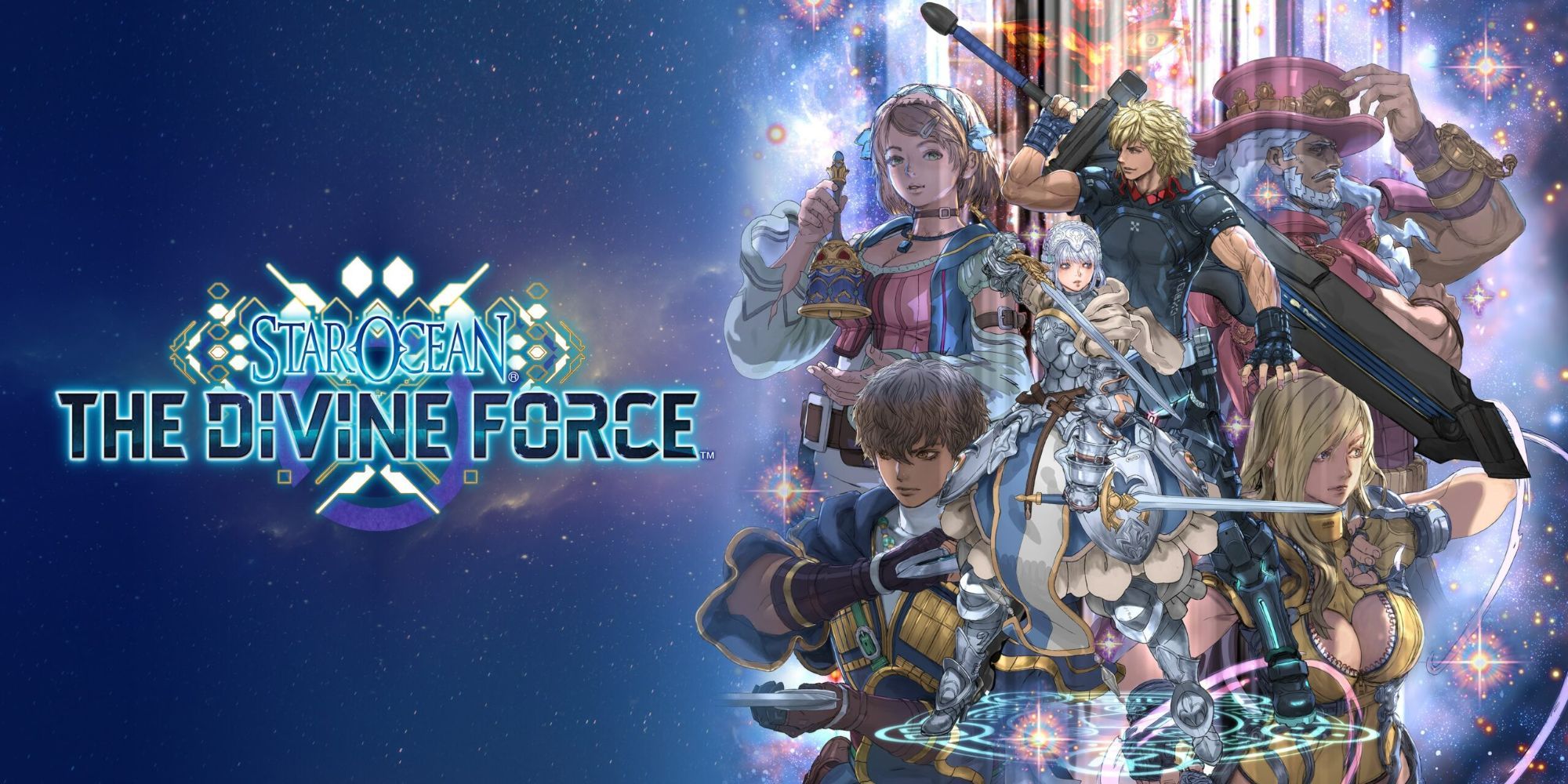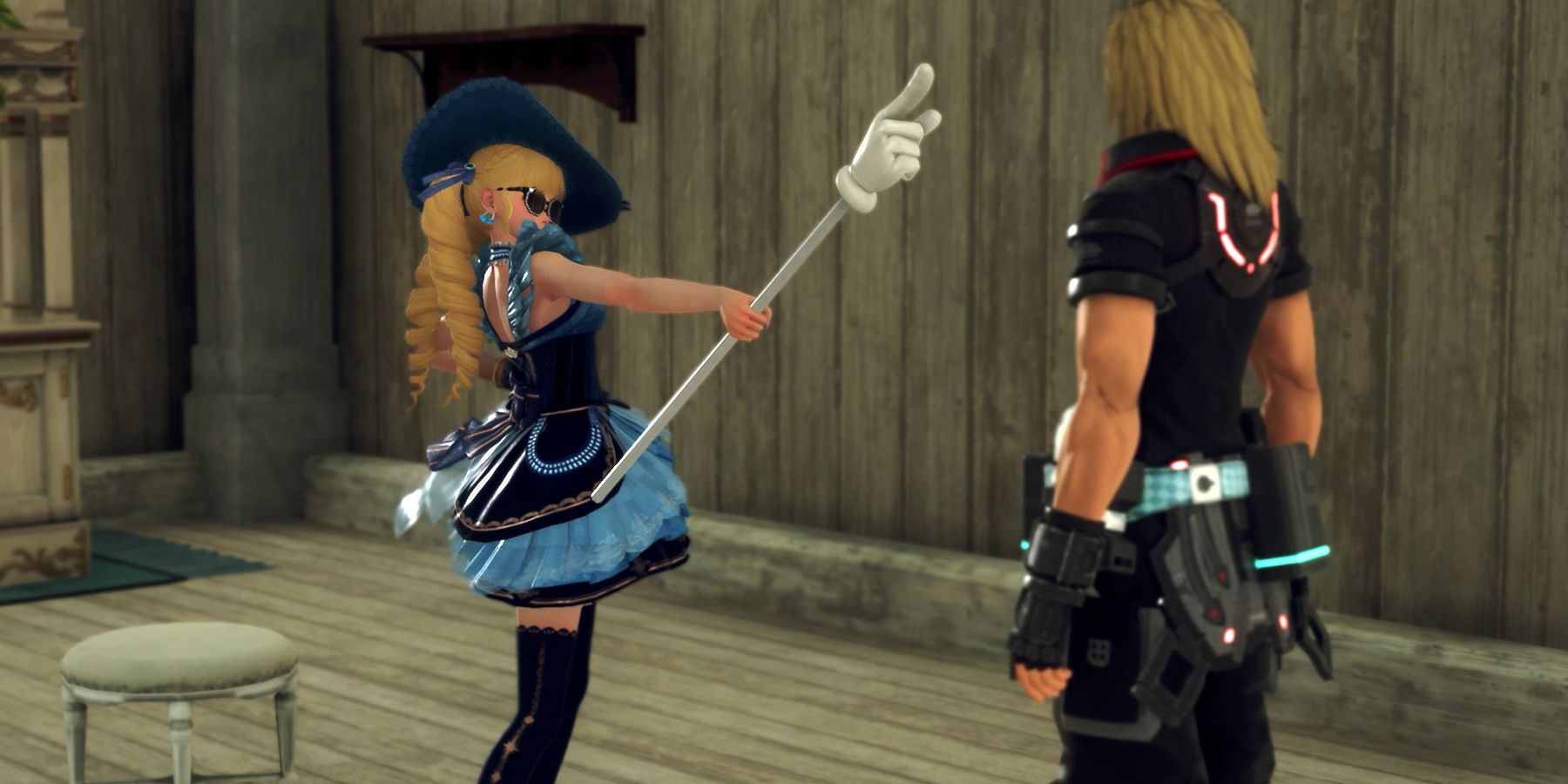Tri-Ace is a development studio responsible for producing several JRPG gems over the years, but its name is perhaps most easily recognized in relation to the long-running franchise it created: Star Ocean. Now, over 25 years after that classic debuted in Japan, the developer has crafted a sixth proper installment. Star Ocean: The Divine Force pays homage to much of what has made the series a delight from the start, while introducing additional elements that offer a compelling experience to an audience that might be unfamiliar with past triumphs.
Star Ocean: The Divine Force, like previous entries in the franchise, introduces a seemingly conventional world littered with fantasy tropes, but immediately crashes the gate by introducing a guy and his escape pod. This blend of the standard and the less expected proves fertile ground for the writers, who populate their fantastic world with a cast of memorable characters. These include a rebellious princess, a resentful wise man, a young healer with dreams of healing her world from a plague that rages out of control, and various others.
A diverse cast keeps proceedings lively during the story’s earliest hours, during which time players might be excused for wondering if they have stumbled across a Dragon Quest orTales game simply called by a different name. Besides being fully voiced by a competent cast, the detailed character models are animated well and prove quite expressive. In the best of moments, they convey complex emotions with the tilt of an eyebrow, an averted glance, or a shrug, even if the volume is muted. Unfortunately, sometimes those movements are exaggerated, which causes characters to come across as hyper or comical. The artists also clearly paid a lot of attention to hair, but maybe not quite enough, and the result proves distracting at odd moments.
The art team spent a lot of time on the environments, as well. Aster IV, home planet to most of the central characters, features the expected deserts, jungles, forests, mountain peaks, and caverns, usually filled with impressive textures and ample foliage that prevent the feeling of emptiness other games evoke. In particular, the numerous villages and cities boast impressive scale, with enough wandering NPCs on hand to make them feel lived in. There are some places where additional time in development wouldn’t have hurt, however. The water in some port environments doesn’t look especially fluid and inviting, which is easy to notice only because it doesn’t live up to the standards on display elsewhere.
In a lot of JRPGs, the generally impressive environments might seem like little more than pleasing window dressing. Star Ocean: The Divine Force breaks the mold by allowing the hero to flit about each location like a tourist in search of a restroom. Princess Laeticia, one of two characters players can follow persistently from the campaign’s start, launches from the ground and jets into the air, landing on a rooftop or brushing against walls while seeking hidden treasure chests or crystals that allow her to further enhance the robotic pod which accompanies her on her journey. Observant players thus have ample motive to pay close attention to each nook and cranny, even in areas they may have previously visited.
Freedom of movement proves useful in combat, as well. The Star Ocean series has long featured active combat, and that holds especially true for this sixth installment. There are numerous elements at play, but the central one is the “blindside” mechanic. It permits players to surprise an enemy and mount a vicious attack for several seconds before the foe retaliates. Dodging proves useful once situations intensify, as does a mastery over aerial strikes. Combos also feature prominently. Adept warriors will string together dozens of hits as they flow from one target to the next and the other party members pitch in with swordplay, gunfire, and sorcery.
Though often frenetic, combat also features more strategic elements. The party often contains four active heroes at once and the player can switch between members at the tap of a button, all without slowing the action, or pause everything to input commands and use items. Thanks to this simple interface, it’s possible to focus on action when desired—as one might in an action game, such as Immortals: Fenyx Rising—but also to tend to more fiddly matters such as selecting desired items from a menu. Good preparation is key. Players can assign moves to combo strings to any party member ahead of battle, settling on arrangements to suit a variety of play styles. There’s no requirement that they hop from one hero to the next, either; it’s possible to progress through the entire campaign while barely stepping away from the chosen hero at all.
When players aren’t fighting or exploring, they’ll experience another franchise staple: character skill progression. Every cast member has their own skill tree, complete with a host of learnable skills. Many of them are unique to a given hero. More general attributes round out each tree. Players can opt to improve a character’s physical attack and defense, their ability to withstand blows without stumbling all over the place, and their heartiness in the face of elemental attacks. There are quite a few choices to make and priorities to settle upon, which makes each level gain a genuine thrill because then it’s time to go make some more improvements. The system is nicely balanced so that the next upgrade is rarely more than a few battles away.
Grinding isn’t typically necessary, but it can feel rewarding thanks to the presence of an addictive crafting system that eats up skill points players might otherwise devote to more conventional character improvements. As the adventure progresses, the heroes learn to create new gear using familiar components, and even to mix and match elements (and passive traits) to create equipment that otherwise is unavailable. Such systems don’t run as deep as they do in the excellent Atelier series, since even the best materials seem to generate only a few unique results in the hands of a master crafter, but the diversion can still eat up a lot of time for those players who want to build the best warriors possible and outfit them with the most thrilling gear.
Impressively, Star Ocean: The Divine Force remains lively and interesting for much of its campaign, which lingers somewhere around 40 hours if players progress at a steady clip while paying only occasional attention to the numerous opportunities that lie off the beaten path. Some of the most meaningful distractions include dozens of side quests, a simple strategy game many of the world’s inhabitants love, and “private actions” (a franchise staple that builds the relationships between principal characters). The central plot takes its time exploring themes familiar to the genre, such as heroism, free will, and tyranny. Villains have ample opportunity to grow and to explain themselves and their motives, and so do the heroes. But eventually, they’ve all made their point, and then they keep right on explaining. The last few hours occasionally feel monotonous as a result, even with some exciting fan service tossed into the mix along the way. That’s unfortunate because it would have been nice if the affair had remained consistently strong from start to finish, rather than faltering ever so slightly in the closing moments.
As the sixth main installment in a JRPG series that dates to the 16-bit era, one with a slightly tarnished reputation in recent years, Star Ocean: The Divine Force evokes a comforting sense of familiarity even as it experiments with some of its expected returning elements and pushes in exciting new directions. There’s a lot of ground to cover, and Tri-Ace has done a wonderful job of crafting a new world long-time fans and newcomers alike may feel reluctant to leave once the credits roll, even keeping in mind a few rough patches they encountered along the way. That’s no minor achievement, and makes the game easy to recommend to genre fans in search of their next addiction.
Star Ocean: The Divine Force is out now for PC, PS4, PS5, Xbox One, and Xbox Series X. Game Rant was provided a PS5 code for this review.




